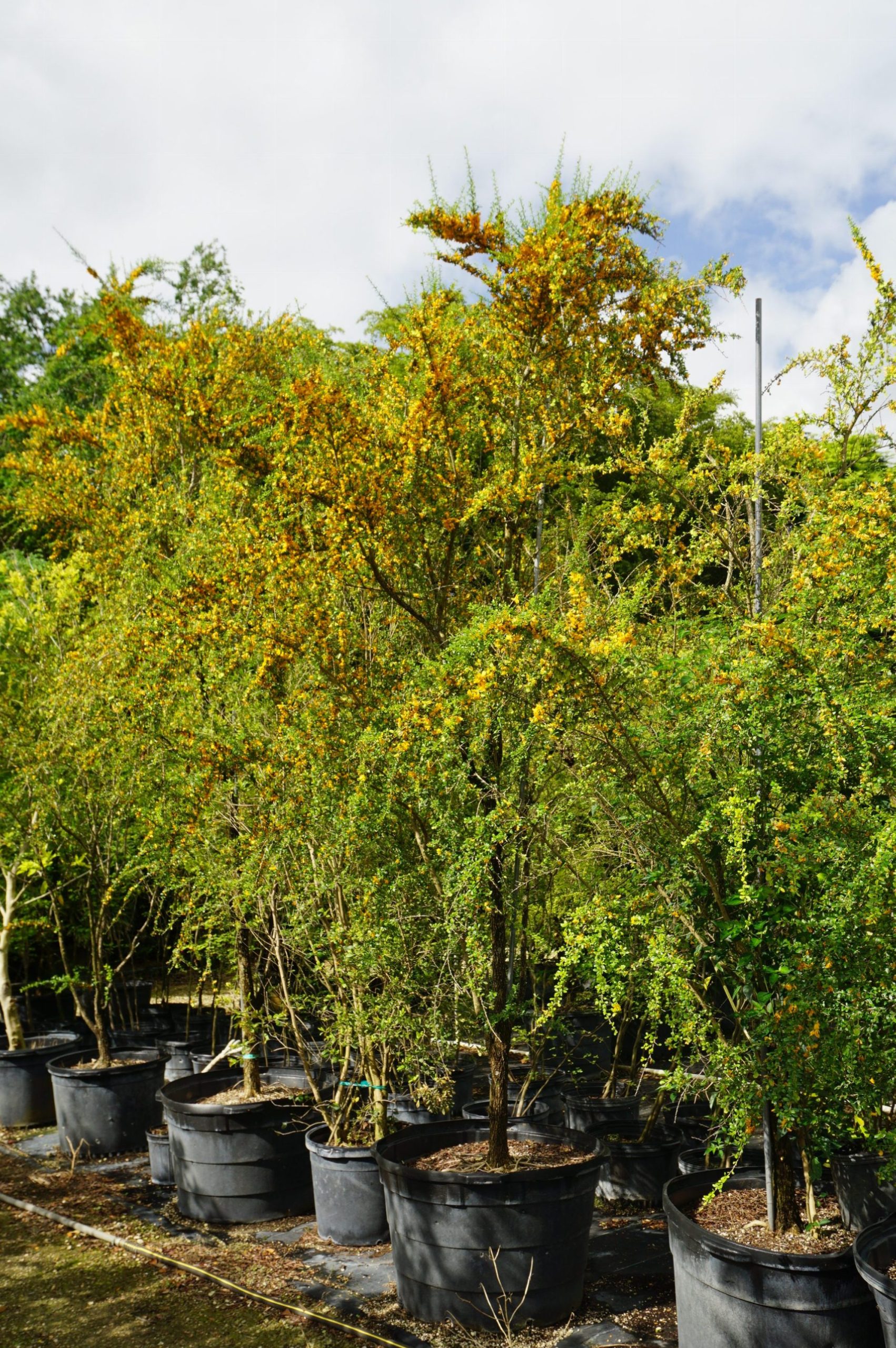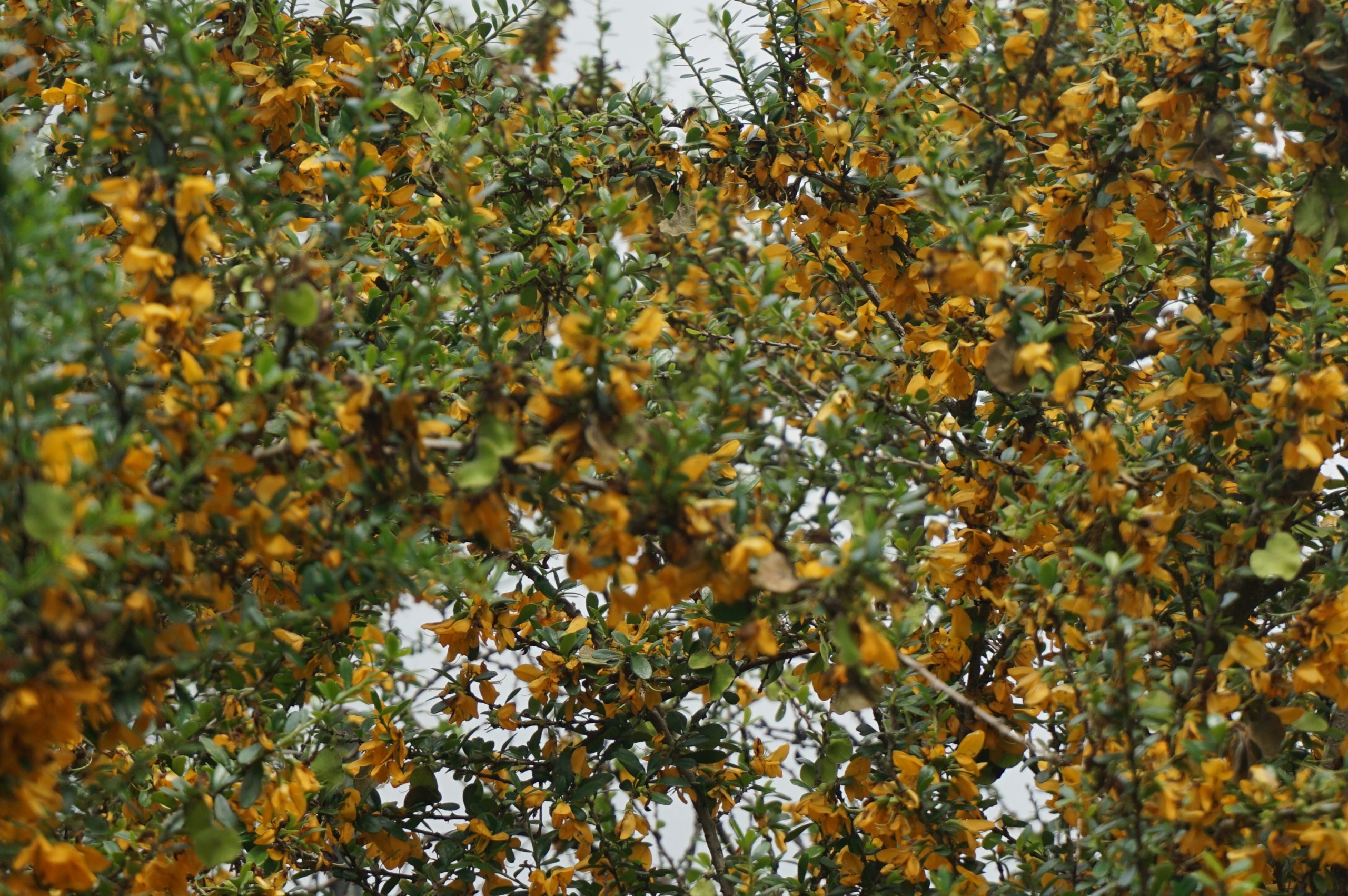Description
Brya Ebenus Tree Description
Brya ebenus tree is about 30 feet (9.14 m) tall. Furthermore, it bears long, droopy branches with gray, rough bark. The green waxy leaves of the Jamaican Rain tree are compound, whorled, and obovate. The leaves are small, and smooth textured.
In addition, as its name suggests, this tree for sale blooms just after it rains. Brya ebenus produces a short inflorescence of tiny bright yellow pea-shaped flowers, which attract bees. Furthermore, its fruits are thin two-jointed pods about 1 inch (2.54 cm) long. To propagate use seeds. Although little information has been published about its growth requirements, it exhibits a slender growth habit. Also, its native habitat of scrublands suggests it requires well-drained soils.
Where To Plant Brya Ebenus Jamaican Rain Tree?
Brya ebenus is a valuable tropical hardwood, known in the trade as cocus wood. Cocus wood is durable and has a history of use in making musical instruments (such as flutes). In summary, the spectacular flowering habit of the Jamaican rain tree makes it popular in any garden setting. You can also use Brya ebenus on the seaside. Additional uses include: as an accent tree, in the courtyard, in a large planter, in a median strip, and xerophytic collection. The Brya ebenus Jamaican Rain tree also makes an excellent bonsai plant.
🌳More popular and beautiful plants: Pimenta Racemosa







